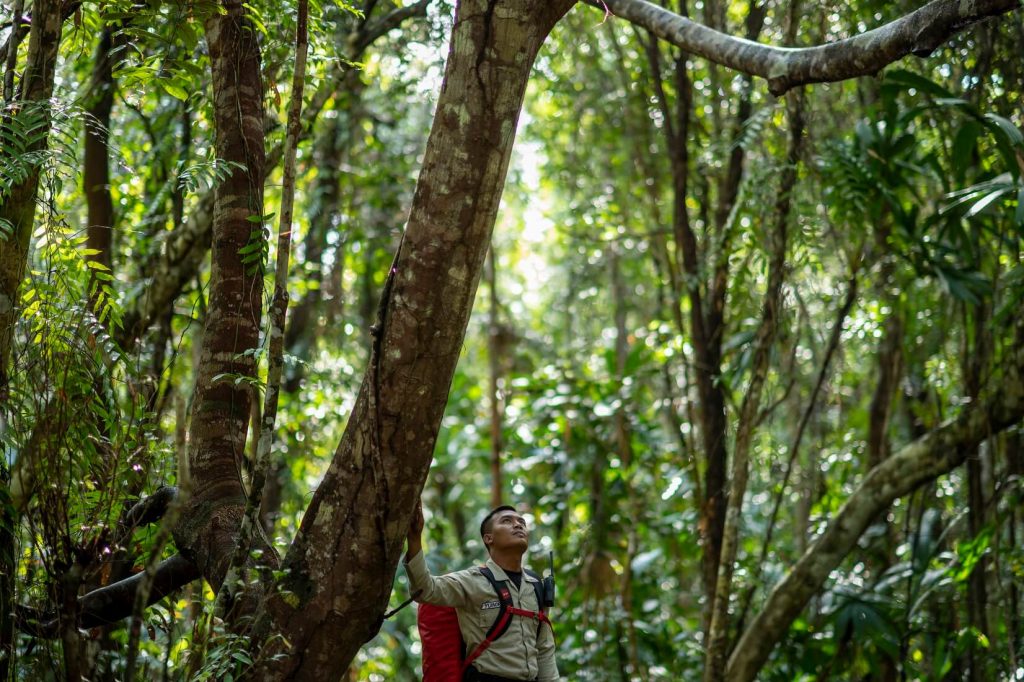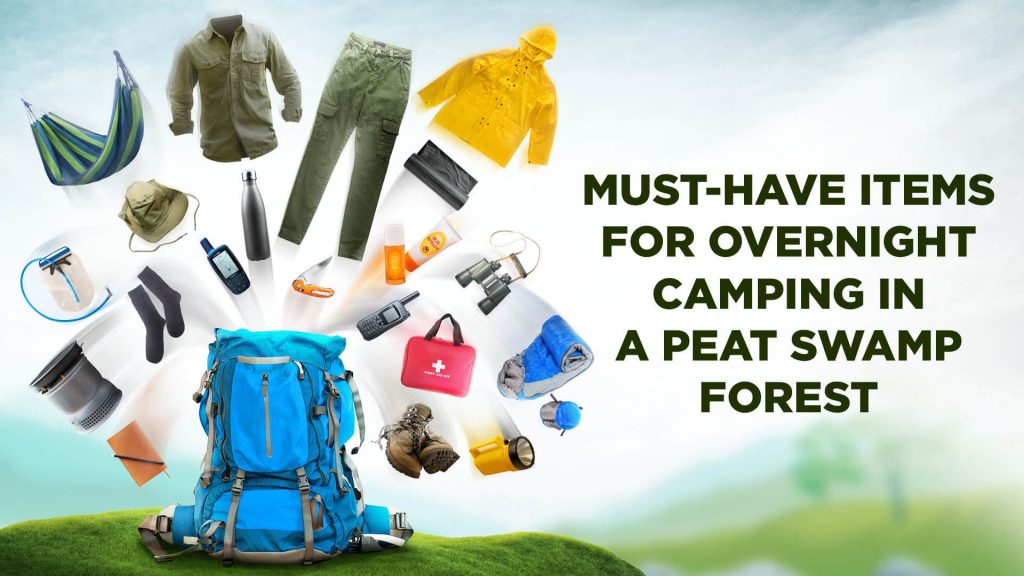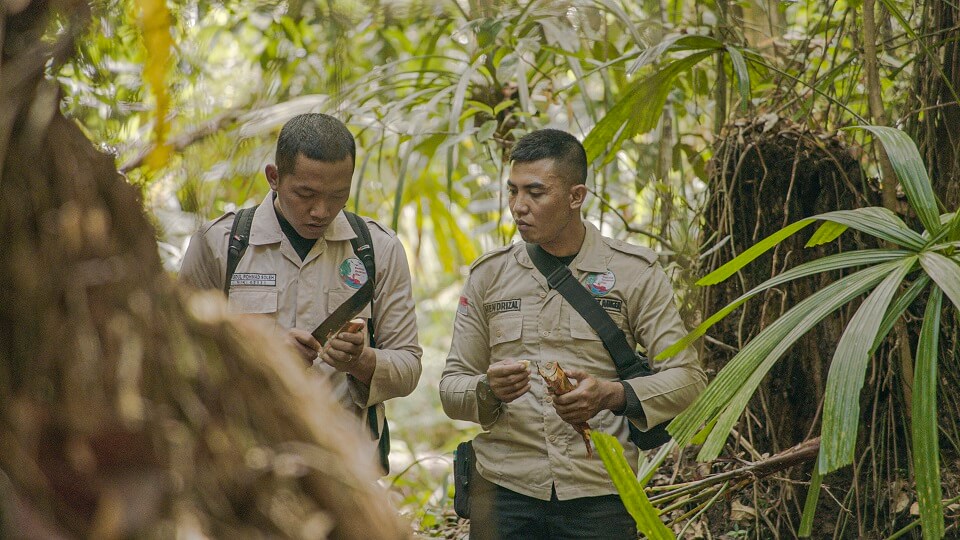Peatlands are some of the world’s most important habitats. They filter our drinking water, protect us from floods, and store more carbon than all the planet’s forests combined. And yet, despite everything they do for us, peatlands remain undervalued, maltreated and misunderstood.

Hutan gambut RER
At Restorasi Ekosistem Riau (RER), we’re committed to preserving and celebrating these vital habitats, while also investigating some of the big questions associated with them: What are peatlands? Why do they matter? And what do I need to pack if I’m traveling to one? For answers to all these questions and more, the RER team has got you covered.
Peatlands: Top 5 Facts
- Peatlands cover around 2.8% of Earth’s surface
- More than 30% of the world’s soil carbon is stored in peat forests
- These ecosystems provide essential habitats for a variety of wildlife
- Peatlands provide natural water filtration and help to prevent flooding
- 5% of all Co2 emissions can be traced back to the destruction of peat forests
Where can you find peat forest in Indonesia?
Indonesia is home to 21 million hectares of peatlands, representing about 23% of all the peat swamp forests found worldwide. These important areas can be found mostly in Central Kalimantan, but also in Riau Province along the coast of Sumatra, and in some areas of Papua and West Papua at the far eastern edge of the archipelago.
What to prepare before you visit a peat forest?
So you’re thinking of venturing into a peat forest? Well, these habitats are certainly no picnic. But if you plan ahead and pack correctly, you can have a truly unique and unforgettable experience. To stay safe on your trip into Indonesia’s remaining peat forests, here’s a list of essential items for your backpack, direct from our ecologist at RER, Muhammad Iqbal:

Must-have items for overnight camping in a peat swamp forest
Our Checklist of 8 Essential Items to Bring to a Peat Forest:
- Mosquito repellent. “I prefer biodegradable lotions over sprays; lotions give you more control over what you’re covering—in other words, you get the spray on you, not on the floor, furniture or plant life around you. Wipes are ok, as long as you dispose of them properly.”
- Pants. “Your instinct might be to wear shorts in a warm environment like RER. I advise light-weight field pants instead. You’ll be better protected from splashy mud and insects.”
- Long socks
- Hiking boots. “When it comes to footwear, hiking boots are a good option because of their sturdy lugs that dig into the ground and their rubber outsole that gives great grip on a variety of surfaces. You won’t have to worry about rocks and roots hurting your feet because of the soles’ durability.”
- Raincoat. “The weather in Indonesia’s tropical forests can be hard to predict. Sometimes it’s sweltering, but rain is also common. As a precaution, you can prepare a raincoat. So as not to burden your luggage, bring a disposable coat that is relatively lighter and doesn’t take up space. When you’re not using it, the raincoat can act as an additional sleeping pad.”
- A pencil. “If you plan to take notes along the way, bring a pencil. Why not a pen? If there’s rain, your ink will smear (unless you’re one of those hardcore birders who buy water-resistant notebooks and writing instruments). You may want to take notes as you take in the vast amounts of flora encountered throughout the RER forest area.”
- Trail mix. “You get hungry out there! A word of caution though: don’t bring the trail mix with orbs of chocolate mixed in. In a humid place like a rain forest? The chocolate—and you, once you dip your hand into it—will become a gooey mess that may attract unwanted attention from wild animals!”
- Medicine. “In the forest, there are times when you will face a genuinely unexpected situation, ranging from disturbance by wild animals to bouts of illness. For that, you need to put medicine on your equipment list. Be sure to bring anti-infective drugs such as Tetracycline tablets to prevent the spread of infectious bacteria in the body. And don’t forget to bring diarrhea drugs like Imodium.”
- Folding knife. “This is absolutely essential equipment on the list. In a famously convoluted forest, you can use a knife to open a path. Also, you can use a knife to cut foodstuffs. Choose a multi-purpose knife and put it at the top of your list!”
Other essentials recommended by the team include a satellite phone, so you can stay in touch with the outside world in case of emergencies; a decent global positioning system (GPS), so you can find your way in and out; and a good quality hammock and tent, so you can give your feet a rest and recharge your batteries after a long day of trekking.

What to prepare before you visit a peat forest?
In addition to what’s in your backpack, there are some important steps you can take to stay safe when traveling into Indonesia’s peat forests. Based on their years of experience – and with some lessons learned the hard way – one of our rangers, Hendrizal, has these essential survival tips:
Top 5 Survival Tips for Travel in an Indonesian Peat Forest
- Travel with a companion. “You don’t want to be by yourself in case of an emergency. If you’re entering a remote area, your group should have a minimum of four people; this way, if one is hurt, another can stay with the victim while two go for help. If you’re going into an area that is unfamiliar to you, take along someone who knows the area or at least speak with those who do before you set off.”
- Be in good physical condition. “Get into the right shape before you travel. When you’re there, set a comfortable pace as you hike. A group trip should be designed for the weakest member of the group. If you have any medical conditions, discuss your plans with your health care provider and get approval before departing.”
- Brush up on your bush skills. “You may need to know how to read a compass, erect a temporary shelter, or give first aid. Practice your skills in advance. If you plan to climb or travel to high altitudes, make plans for proper acclimatization to the altitude.”
- Make camp before dark. “Traveling after darkness has resulted in many accidents from falls, so travel only during daylight. Set up camp well away from the edge of cliffs, and learn the terrain during daylight. If you have to leave camp after dark, stay in areas you have seen in daylight, go with a friend, and always use a good flashlight.”
- Lots of snacks. “Be sure to pack carbohydrate-energy bars, granola, candy, or fruit. They provide an instant pick-me-up on the trail. But don’t forget to bring your trash out of the forest”
So, feeling ready for your trip? If you’re looking for a little extra info, remember you can hike on over to the RER website, where we’ve got loads of additional detail about Indonesia’s peatlands and what we’re doing to protect them. Now you know, you’re ready to go!


